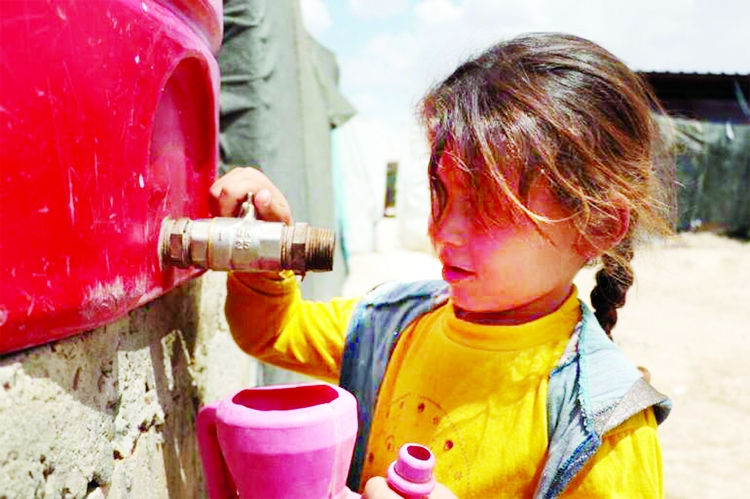
Al Jazeera :
For 71 of his 81 years, Abu Mohammad Sheikh Hussein has been farming the land in northeast Syria. These last two years have seen some of the lowest water levels in his living memory, he said.
“Before, whoever lived far from the river could dig for groundwater, and they used to find water. But now no matter how deep they dig, they can’t find any source of water.”
Having lost access to groundwater sources, Sheikh Hussein explained that he and others in the area are now depending solely on the Euphrates river, which is near his home.
However, the river has also been dwindling to “critically low” levels this year, according to a report by the World Food Programme.
More than five million people depend on Syria’s longest river for their water source and livelihoods, with the electricity produced by the hydroelectric dams on the river supplying about three million people.
Sheikh Hussein stated that, because of the low water levels in the dams, he and his family are currently only receiving about two hours of electricity a day.
A combination of rising temperatures and decreased levels of precipitation have led to the reduced water levels in the Euphrates.
Another factor perceived locally to be affecting the water levels is the numerous dam projects upstream in Turkey, part of a decades-long development project to build 22 dams and 19 hydroelectric power plants on the Tigris and Euphrates rivers.
According to a project manager working for Mercy Corps in northeast Syria, who asked to remain anonymous because of security reasons, Tishreen dam, one of the two main dams on the Euphrates, is 47 centimetres away from reaching “dead level”.
He explained that each day, the water level drops by a centimetre, meaning the dam is 47 days away from going out of service. “The cost of bringing [the dam] back into service will be massive,” he said. “As the turbines stop totally, the existing water will flood all the electricity equipment. And due to the conflict … there is no Plan B, and there are no diesel generators to discharge the water from the tunnels to protect the electricity or electrical equipment.”
With fuel prices almost tripling this year in Syria, water has also become much more expensive to pump. Mercy Corp’s project manager said this has “led to an increase in the cost of the agricultural operation, and ultimately [increased] the price of crops and goods such as bread”.
He added that, because of the water crisis, many people now “depend on the stagnant water in the irrigation canals”, which has “led to the spread of waterborne illnesses such as diarrhoea and intestinal infection”.
As well as illness, he stated that collecting water from the canals can be risky. “There were seven cases [in summer 2021] of people drowning in these irrigation canals when they were trying to get water. All those people are women and children.” After 10 years of conflict, the project manager explained that water scarcity is adding “another layer to the people’s suffering in the region”.
This comes following a report from 13 organisations in the region, warning that urgent action is needed to combat the severe water crisis.
As the United Nations Climate Change Conference (COP26) in Glasgow comes to an end on Friday, the project manager said he hopes the international community will invest more in sustainable programmes and alleviate the suffering caused by a combination of climate change, economic instability, conflict, and the COVID-19 pandemic.
In contrast, northeast Syria, where the main water source is the Euphrates river, northwest Syria’s main water sources are ground wells and springs. The rebel-controlled area in the northwest of the country has seen continued attacks, often backed by Russia, compared with the relative calm of the Kurdish-controlled northeast.

